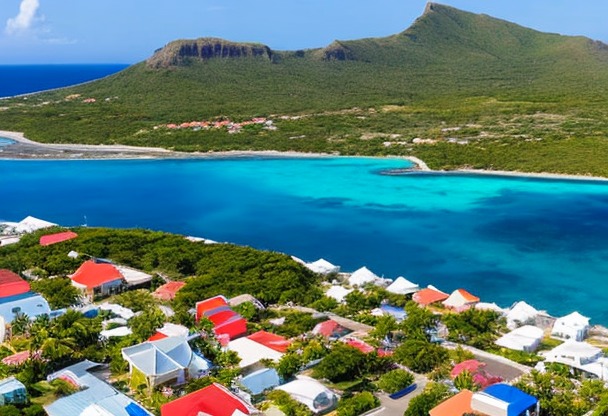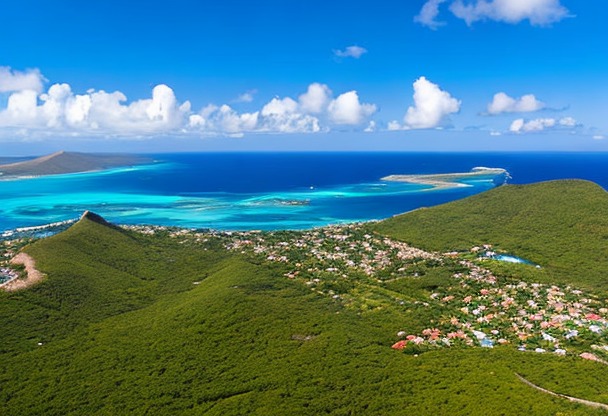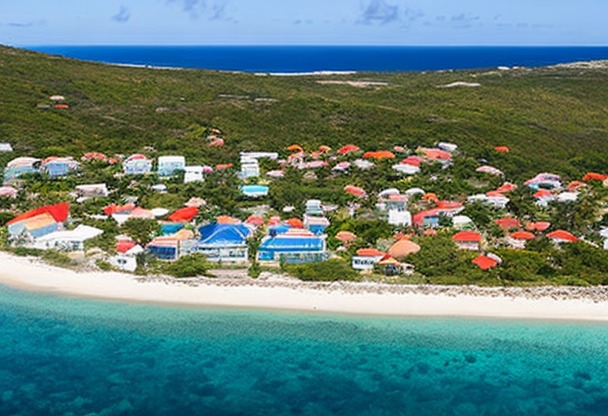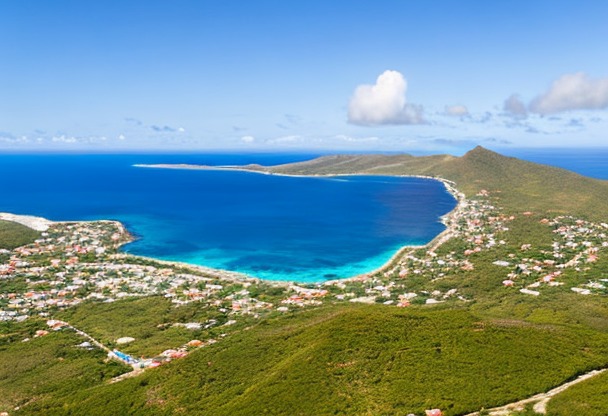WHEN TO TRAVEL TO Bonaire, St. Eustatius and Saba
Choosing the right time for your trip to Bonaire, St. Eustatius and Saba can make all the difference. It's important to consider weather elements, seasonal events and peak tourist periods to maximize your travel experience.

Location
Climate
The climate in Bonaire, St Eustatius and Saba
Located in the Caribbean Sea, these three islands enjoy a tropical climate, with average temperatures between 26°C and 30°C all year round. Sunshine is generally abundant, with more than 8 hours of sunshine a day.Rainy and dry periods
The dry season generally extends from January to September. During this period, rainfall is rare and temperatures are particularly mild. On the other hand, the rainy season lasts from October to December, with showers that can be intense but are often short-lived.The influence of trade winds
The trade winds blow over the islands all year round, bringing a gentle cooling breeze that makes for a very pleasant climate. They are particularly strong between January and May.Low and high tourist seasons
As with most destinations, Bonaire, St. Eustatius and Saba experience high and low tourist seasons. The high season generally coincides with school vacations and the festive season, while the low season corresponds to the other months of the year.High season: December to April
This period is marked by a large influx of visitors, who come to enjoy the sunshine and mild temperatures. Accommodation can be more expensive and tourist sites more crowded. However, this period also offers a wide range of cultural and festive events.Low season: May to November
The low season is less crowded with tourists, which means you can take advantage of generally lower accommodation rates and a quieter atmosphere on the beaches and at the tourist sites. Although rainfall is heavier during this period, it is often short and should not significantly disrupt your activities.Major cultural events
Bonaire, St. Eustatius and Saba offer numerous cultural events throughout the year, reflecting the richness of the local heritage and traditions. Here are just a few of the highlights not to be missed during your stay:- Carnival This colorful festival takes place between February and March on all three islands, with parades, concerts and entertainment for young and old.
- National holiday ("Koningsdag"): celebrated on April 27, this day commemorates the birthday of King Willem-Alexander of the Netherlands, with popular family festivities.
- Day of Sheba Saba: the national holiday of Saba, held on the first Friday in December. On the program: performances, traditional dances, local gastronomy and sports competitions.
Public holidays
Finally, here are some public holidays in Bonaire, St. Eustatius and Saba that may have an impact on tourist activities and available services:- New Year's Day (January 1)
- Good Friday And Easter Monday (dates vary, usually in March or April)
- Ascension (date varies, usually in May)
- Pentecost (date varies, usually in May or June)
- Queen's Day (April 27, or April 26 if the 27th falls on a Sunday)
- Discovery of America by Christopher Columbus (October 12)
- Christmas (December 25) and Boxing Day (December 26)
Insurance

Your credit card does not cover you in all situations, that is whyIt is essential to take out insurance before you leave to avoid any unpleasant surprises. If you need to see a doctor or be hospitalized, in some countries, medical costs are very high and you will then find yourself having to pay several thousand euros.
Our partner Chapka Insurance proposes the contract CAP ASSISTANCE 24/24 with many essential guarantees.


Flights

Your flight has been cancelled or delayed ?
You may be eligible for a compensation of up to €600 ! For this, lawyers are responsible for handling your claim with the airline and are only paid when the reimbursement is effective.
In conclusion, no financial risk for you, only advantages!
Immigration and nationalities in Bonaire, St. Eustatius and Saba
As overseas collectivities of the Netherlands, immigration processes in Bonaire, St. Eustatius and Saba are closely linked to those in mainland France. However, these islands also have specific immigration and visa rules, to meet their local needs and preserve their unique environment. The nationalities most represented in Bonaire, St Eustatius and Saba are :- Dutch
- Americans
- Canadians
- Venezuelans
- Dominicans
Most popular visas in Bonaire, St. Eustatius and Saba
The visa categories available to foreigners wishing to stay or work in Bonaire, St. Eustatius and Saba are similar to those in the Netherlands. Here are the most popular types of visa:- Schengen Visa The Schengen visa: This visa allows a short-term stay (up to 90 days) in the Schengen area, including the BES islands. This visa is generally used for tourism, family visits or business travel.
- Work visa This visa is intended for people who have received a job offer on one of the BES islands. This visa is issued on presentation of an employment contract and various supporting documents.
- Study visa Bonaire, St. Eustatius and Saba: for international students wishing to undertake training or internships in Bonaire, St. Eustatius and Saba.
- Family reunion visa This allows close family members (spouses, partners, minor children) to join a foreign national living legally on one of the BES islands.
Visa exemptions for tourists
Nationals of many countries are exempt from visa requirements for short-term tourist stays in Bonaire, St. Eustatius and Saba. These include members of the European Union, the United States, Canada and several Latin American and Caribbean nations.International tourism figures for Bonaire, St. Eustatius and Saba
Tourism plays a major role in the economy of the BES islands, with a growing number of visitors every year. According to official statistics, here are some key facts about international tourism in these territories:- Bonaire 136,000 visitors a year, almost half of them from the Netherlands.
- Saint-Eustache Over 11,000 visitors a year, mainly Dutch and American.
- Saba Around 9,000 tourists a year, mainly from the Netherlands and the United States.
Main tourist activities
The BES islands offer a wide variety of activities for tourists, from water sports to hiking and discovering the local flora and fauna. Here are some of the most popular attractions:- Scuba diving and snorkeling The seabed of the BES islands is renowned for its beauty and biodiversity, attracting divers from all over the world.
- Hiking tours National parks and hiking trails offer visitors the chance to explore the islands' wilderness and spectacular scenery.
- Birdwatching The BES islands, with their many habitats, are home to a wide variety of bird species, some of which are endemic to the region.
- History and culture Historic sites, museums and cultural events give tourists a chance to discover local history and traditions.


